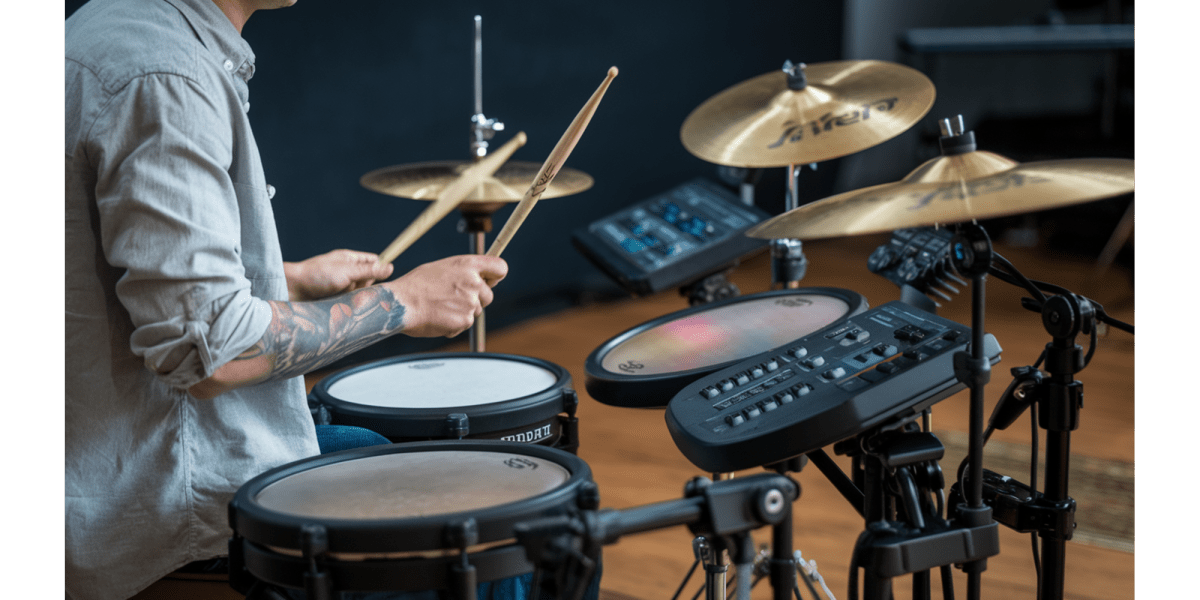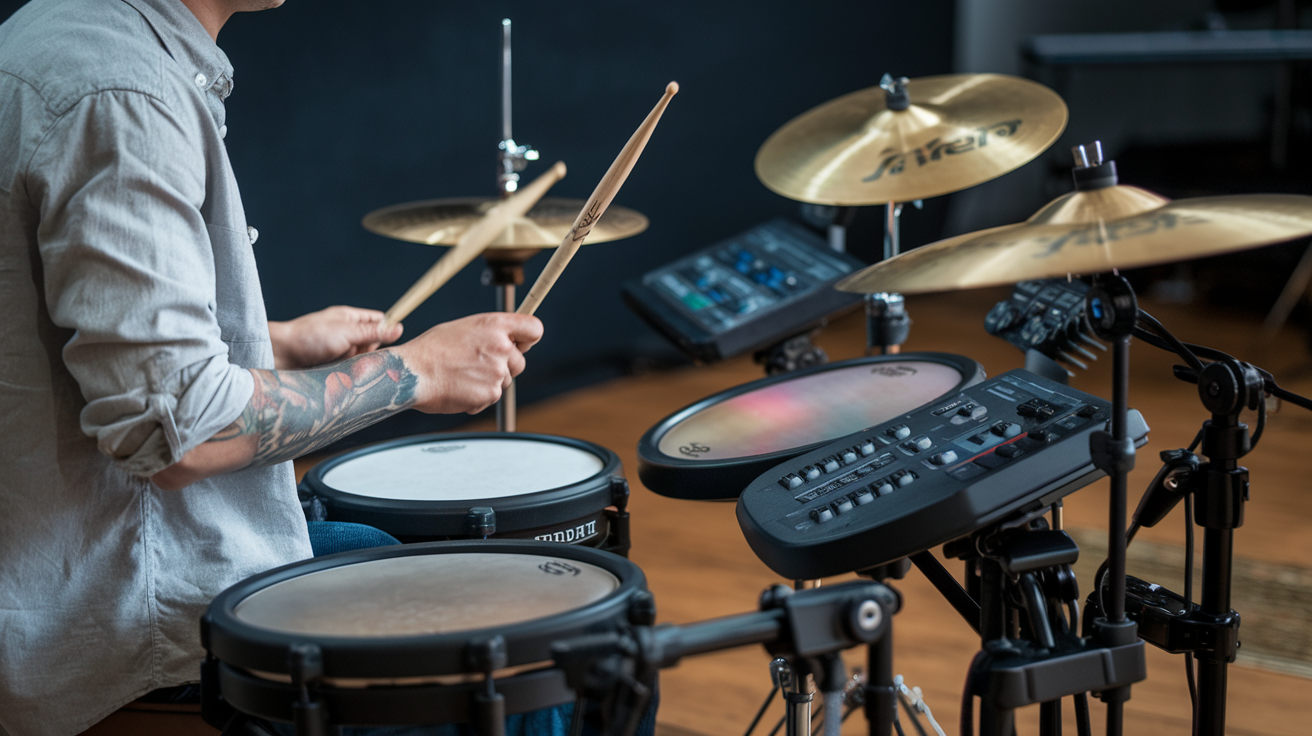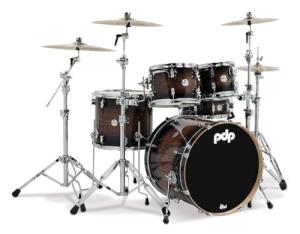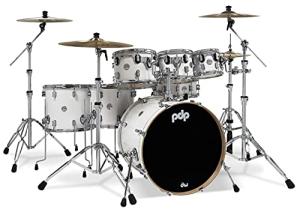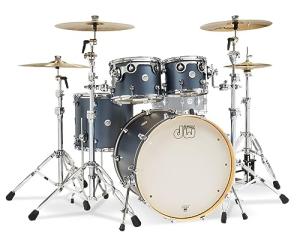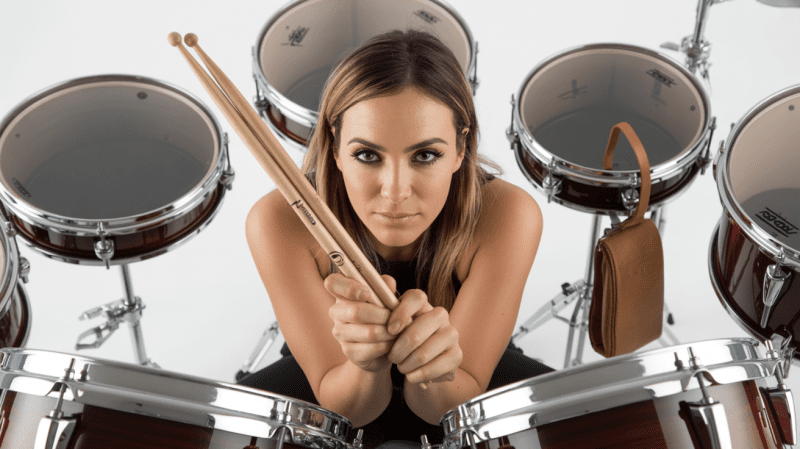Understanding the Foundations of Drumming Style
As a drummer, having a unique drumming style is key to standing out. It's what makes you different and lets you share your music in a special way.
The best drummers don't just happen by chance. They have a style that connects with people. Creating a personalized drumming style takes effort, but it's a journey worth it.
In this article, we'll dive into the main parts of drumming style development. We'll also share tips on finding your drumming voice. Knowing what makes your drumming unique allows you to improve your skills and feel more confident.
Starting your journey to find your unique drumming voice is exciting. It's all about mastering the basics and adding your own flair. This mix of technical skill and personal touch is key.
What Makes a Drumming Style "Unique"
A unique drumming style combines drumming technique and personal expression. It's about balancing technical skills with your own unique touch. This way, you create a sound that's truly yours.
The Balance Between Technique and Expression
Technique gives your drumming a solid base. But it's the expression that brings it to life. Finding the right balance is essential. This way, your playing will be both skilled and heartfelt.
Why Individuality Matters in Modern Drumming
In today's music world, being unique is more important than ever. By developing your own drumming style, you can shine. You'll make a real impact in the music scene.
Analyzing Your Current Drumming Approach
Understanding your drumming style starts with evaluating your current approach. It's important to know your strengths and weaknesses.
Identifying Your Strengths and Weaknesses
I make a list of my drumming strengths and areas for improvement. It's about being honest with myself about my technique and performance. By identifying drumming weaknesses, I can improve those areas in practice.
Recording and Self-Assessment Techniques
Practicing with a click and recording yourself helps with timing. Listening to recordings lets me see my performance clearly. This way, I can make the right changes.
Getting Constructive Feedback from Others
While self-assessment is key, constructive feedback from others is valuable. I ask for opinions from other drummers, instructors, or mentors. This gives me a broader view of my drumming.
Combining self-assessment with feedback from others helps me better understand my drumming. This allows me to focus on making specific improvements.
How to Develop Your Unique Drumming Style
Creating your drumming style is a mix of skill, creativity, and expression. It's a personal journey that never ends.
The Process of Style Development
Start by finding your influences and inspirations. Listen to many types of music and find drummers you like. Think about how you can use their techniques in your own playing.
Setting Personal Style Goals
To move forward, set clear and reachable goals for your drumming. These could include mastering new techniques, improving your timing, or creating a unique sound. Having personalized drumming goals keeps you focused and motivated.
Creating a Development Timeline
A drumming development timeline is key to tracking your progress. It includes both short-term and long-term goals.
Short-term Style Milestones
Short-term drumming milestones might be learning a new rudiment or boosting your speed in a few weeks. These goals should be tough but doable, giving you a sense of achievement and drive.
Long-term Style Vision
Your long-term drumming vision is about your future style. It could be creating a unique sound, working with other musicians, or playing at certain places. A clear vision helps guide your practice and keeps you on track.
By using this structured method for drumming style development, you'll make steady progress. Remember, the journey to finding your unique drumming style is just as valuable as the end result.
Drawing Inspiration from Diverse Sources
Drawing from many sources is key to making your drumming unique. Exploring different genres, cultures, and techniques can boost your style.
Studying Drummers Across Different Genres
Studying drummers from various genres is a great way to grow. Jazz offers complex rhythms, while rock has energetic beats. Each genre brings its own techniques and styles to your playing.
Finding Inspiration Outside of Music
Music isn't the only source of inspiration. Nature, art, and cultural celebrations can also shape your style. For example, traditional dances or martial arts can inspire your drumming patterns.
Incorporating Cultural Rhythms into Your Playing
Adding cultural rhythms can deepen your drumming. By learning and using these rhythms, you can create a distinctive sound.
African and Latin Influences
African and Latin cultures are known for their rich rhythms and beats. These influences can make your drumming more vibrant and diverse. For instance, djembe rhythms from West Africa or salsa beats from Latin America can enhance your playing.
Jazz and fusion drumming focus on improvisation and complex rhythms. Learning from these genres can refine your drumming. Techniques like ghost notes and polyrhythmic patterns can add depth and interest to your playing.
Technical Exercises to Enhance Your Personal Style
Unlocking your unique drumming style starts with mastering technical exercises. These exercises help you express yourself through drumming. Adding specific drills to your routine can improve your skills and create a unique sound.
Rudiment Variations and Personalization
Practicing rudiment variations is a great way to enhance your style. Rudiments are the basics of drumming. By making them your own, you can make them more interesting and fit your style better.
Developing Signature Fills and Grooves
Creating signature drumming fills and grooves is key to your unique sound. Try out different rhythms and techniques to find what suits you best. This way, you can add a personal touch to your drumming.
Experimenting with Dynamics and Timing
Dynamics and timing are vital for your drumming style. Playing with different volumes and timing can make your sound more expressive and detailed.
Micro-timing and Feel Development
Micro-timing adds a human touch to your drumming. Focus on these subtle timing variations to make your playing more relatable and engaging.
Creating Tension and Release
Building tension and release is crucial in drumming. It involves creating tension and then resolving it, adding drama and depth to your playing. Mastering this can make your drumming more emotionally rich.
Equipment Choices That Shape Your Sound

Choosing the right equipment is key to developing your unique drumming style. The sound you make is not just about your technique. It also depends on the instruments you use.
Finding the perfect equipment starts with understanding how different parts affect your sound. Think about the type of drums, cymbals, and other percussion that fit your music style.
Drum Selection and Tuning for Your Signature Sound
When picking drums, consider the material, size, and tuning. Wooden drums give a warmer sound than metal drums. Tuning your drums to the right pitch is also crucial. It affects the resonance and clarity of your sound.
Cymbal Combinations That Define Your Style
Cymbals add depth to your drumming, and different cymbal mixes can drastically change your sound. Try out various cymbal types, like crash, ride, and hi-hats, to find the right mix for your style.
Exploring Alternative Percussion and Hybrid Setups
Don't shy away from trying new things. Add alternative percussion elements, like electronic drums or world percussion, to your sound. Hybrid setups mix acoustic and electronic drums. They're versatile and can fit many music genres.
Applying Your Style in Real-World Situations
Using your drumming style in real life needs a deep understanding of your craft. You must also be able to change your approach. As a drummer, you'll play in many settings, like band shows and recording sessions.
Balancing Personal Expression with Band Requirements
One big challenge is mixing your drumming style with the band's needs. You must listen to the band's sound while adding your twist.
Adapting Your Style for Different Musical Contexts
Every musical setting asks for a different style. For example, jazz and rock bands need different drumming. Being able to change your style for each genre is key.
Making Your Mark in Recording Sessions
Recording sessions are a chance to show off your drumming. To stand out, aim for performances that are perfect and personal.
Developing Stage Presence That Complements Your Sound
Your stage presence is as vital as your drumming skills. Building a strong stage presence means being confident and energetic and connecting with the audience. Combining a great stage presence with your unique drumming will leave a lasting impression on your listeners.
Conclusion: Embracing Your Drumming Identity
As you keep drumming, it's key to find your own style. Knowing your strengths and weaknesses helps. Drawing from many sources and trying new things also helps your unique sound to grow.
Building confidence in drumming starts with trusting yourself. Be true to your drumming voice. Your style shows who you are and what you've experienced.
You'll create a unique sound by being yourself and exploring new ways to play. This will not only make you stand out but also inspire others. Your drumming is a powerful way to express yourself and will surely impact those who listen.
FAQ
Q: What is the importance of having a unique drumming style?
Q: How do I analyze my current drumming approach?
Q: What is the role of technique and expression in developing a unique drumming style?
Q: How can I draw inspiration from diverse sources to enhance my drumming style?
Q: What technical exercises can I use to enhance my personal drumming style?
Q: How do equipment choices impact my drumming sound?
Q: How can I apply my drumming style in real-world situations?
Q: What is micro-timing, and how can I develop it?
Q: How can I create a signature drumming style?
Q: Why is individuality important in modern drumming?
DISCLAIMER
This document is provided for general information purposes only and should not be relied upon as providing legal advice, technical, or specific operational guidance to the reader, whether as to the practices described in the document or the applicable legal requirements and regulations. Percussion Pros. Com expressly disclaims any responsibility for liability arising from or related to the use or misuse of any information in this document.
